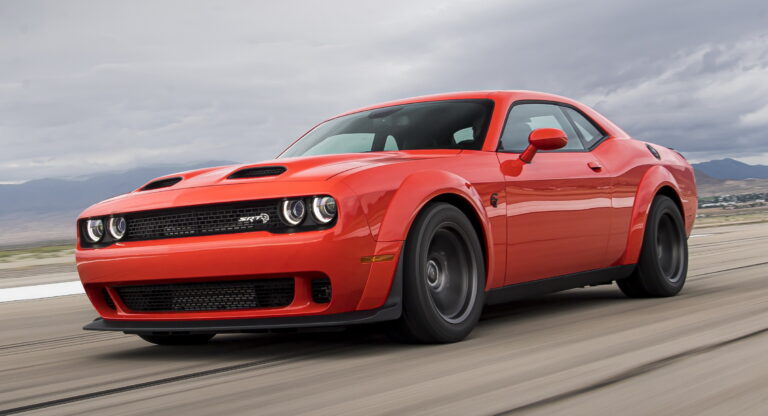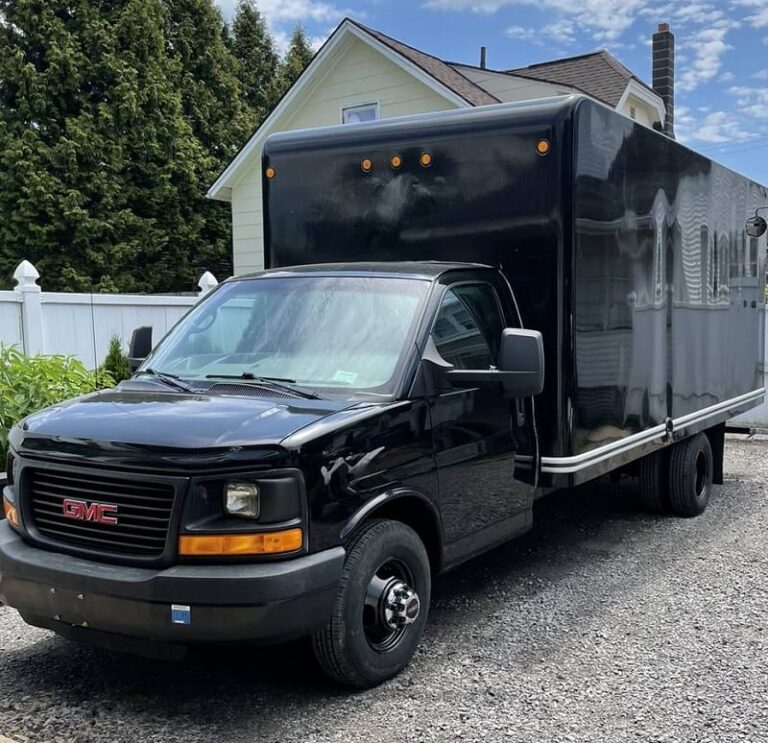Snow Tracks For A Truck: Unlocking Unparalleled Off-Road Dominance
Snow Tracks For A Truck: Unlocking Unparalleled Off-Road Dominance cars.truckstrend.com
Imagine this: a pristine blanket of snow stretches endlessly before you, impassable for any ordinary vehicle. Or perhaps a remote work site, mired in thick mud, where traditional tires simply spin hopelessly. In these extreme scenarios, the limitations of conventional wheels become glaringly apparent. This is where snow tracks for a truck emerge as the ultimate game-changer, transforming a capable pickup into an unstoppable force, capable of traversing terrain previously deemed impossible.
Snow tracks, often simply referred to as track systems, are specialized attachments that replace a truck’s conventional wheels, converting it into a tracked vehicle. Far more robust and effective than tire chains, these systems provide unparalleled flotation and traction, distributing the vehicle’s weight over a significantly larger surface area. The result? A truck that can glide over deep snow, slog through thick mud, conquer sandy dunes, and even navigate rocky, uneven terrain with a level of confidence and capability that wheeled vehicles can only dream of. For adventurers seeking remote wilderness, utility companies needing access to isolated infrastructure, emergency services in critical situations, or anyone requiring absolute mobility in challenging conditions, snow tracks are not just an accessory—they are an essential upgrade.
Snow Tracks For A Truck: Unlocking Unparalleled Off-Road Dominance
What Exactly Are Snow Tracks For A Truck?
At their core, snow tracks for a truck are heavy-duty, engineered track systems, typically comprising four independent units that bolt directly onto the truck’s existing wheel hubs. Each unit consists of a robust rubber track, similar in concept to those found on a bulldozer or tank, wrapped around a series of wheels and a drive sprocket. The track’s aggressive tread pattern provides immense grip, while its wide surface area significantly reduces ground pressure.
The design usually involves a triangular or parallelogram frame, incorporating an internal suspension system that allows the tracks to articulate and conform to uneven terrain. A drive sprocket, connected to the truck’s axle, engages with the track’s internal lugs, propelling the vehicle forward. Anti-rotation brackets are crucial components, preventing the track units from rotating excessively around the axle, ensuring stable and controlled operation. Unlike tire chains, which merely enhance traction on a small contact patch, track systems offer continuous, broad contact with the ground, providing superior flotation that prevents the vehicle from sinking in soft conditions.
The Unparalleled Benefits of Truck Track Systems
The advantages of equipping your truck with a track system are profound, extending far beyond just snow mobility:
- Superior Traction: This is the most immediate and obvious benefit. The large contact patch and aggressive tread patterns provide monumental grip on surfaces where tires would simply slip. Deep powder snow, icy inclines, slick mud, loose sand, and even wet, rocky terrain become manageable.
- Enhanced Flotation: By distributing the truck’s weight over a much larger area, the ground pressure exerted by the vehicle is drastically reduced. This prevents the truck from sinking into soft snow, boggy ground, or delicate ecosystems, making it ideal for environmental exploration or sensitive work sites.
- Increased Ground Clearance: Most track systems elevate the vehicle’s chassis by several inches, significantly increasing ground clearance. This reduces the risk of "belly-out" situations where the vehicle’s underside gets hung up on obstacles, enhancing maneuverability over rough terrain.
- Unmatched Versatility: While "snow tracks" is a common term, these systems are truly all-terrain. They excel in mud, swamps, sand dunes, forestry operations, and search and rescue missions where traditional wheeled vehicles are simply inadequate.
- Vehicle Protection: By preventing the truck from getting stuck repeatedly and reducing the need for aggressive wheelspin, track systems minimize strain on the drivetrain, axles, and transmission, potentially extending the lifespan of these critical components.
- Access to Remote Areas: Track systems unlock access to previously inaccessible locations, whether for recreational pursuits like backcountry skiing or hunting, or for professional tasks such as maintaining remote communication towers or conducting geological surveys.

Choosing the Right Snow Tracks for Your Truck
Selecting the appropriate track system is crucial for optimal performance, safety, and longevity. Several factors must be carefully considered:
- Vehicle Compatibility: Track systems are engineered for specific truck makes, models, and sometimes even trim levels. Factors like bolt pattern, wheel well clearance, suspension geometry, and Gross Vehicle Weight Rating (GVWR) are critical. Always verify compatibility with the track manufacturer.
- Track Material and Design: Most modern tracks are made from durable, reinforced rubber. However, variations exist in tread patterns (aggressive for maximum grip, or less aggressive for mixed terrain), internal support structures, and overall construction. Some may be designed for extreme cold, while others prioritize wear resistance.
- Track Width and Length: Wider tracks offer greater flotation, ideal for very soft conditions like deep powder snow or marshland. Longer tracks can provide better traction on steep inclines and enhance stability, but may increase turning radius.
- Suspension System within the Tracks: Different manufacturers employ various internal suspension designs. Some use rigid frames, while others incorporate independent wheel sets within the track unit to better articulate over uneven terrain, offering a smoother ride and better traction.
- Load Capacity: Ensure the track system’s rated load capacity exceeds your truck’s GVWR, especially if you’ll be carrying heavy payloads or towing.
- Budget Considerations: Track systems represent a significant investment. Prices vary widely based on brand reputation, material quality, engineering sophistication, and overall robustness.
- Intended Driving Conditions: Will you primarily be in deep, soft snow, or more varied terrain with rocks, mud, and ice? Your typical use case should heavily influence your choice of track design and robustness.
Installation and Operation: Getting Your Truck Track-Ready
While modern track systems are designed for relatively straightforward installation, it’s a process that requires mechanical aptitude, proper tools, and adherence to safety protocols.
Pre-Installation Checks:
Before you begin, ensure your truck is in good mechanical condition. Check tire pressure sensors (they will be temporarily disabled), ensure brakes are functioning correctly, and gather all necessary tools, including a high-capacity jack, jack stands, torque wrench, and the specific tools provided by the track manufacturer.
Step-by-Step Installation Guide (General Overview):
- Preparation: Park the truck on a flat, level surface. Engage the parking brake and chock the wheels not being worked on.
- Lifting the Vehicle: Safely lift one corner of the truck using a robust jack and place it securely on jack stands. Ensure the vehicle is stable before proceeding.
- Wheel Removal: Remove the truck’s conventional wheel and tire assembly.
- Adapter Plate/Hub Installation: Attach the track system’s specific adapter plate or hub assembly to the truck’s wheel studs. This adapter is crucial for securely mounting the track unit. Torque all lug nuts to the manufacturer’s specifications.
- Mounting the Track Unit: Carefully lift the track unit and align its mounting points with the adapter plate. Bolt the track unit securely onto the adapter, ensuring all fasteners are properly tightened.
- Anti-Rotation Bracket Installation: Install the anti-rotation bracket (sometimes called a torque arm or radius rod). This crucial component connects the track unit to the truck’s chassis, preventing the track from rotating independently of the axle and maintaining proper alignment.
- Repeat: Repeat the process for the remaining three wheels.
- Final Checks: Once all four track units are installed, lower the vehicle slowly. Double-check all bolted connections for proper torque. Verify clearances around the track units, especially in the wheel wells, ensuring no rubbing or interference during suspension articulation.
Driving Characteristics with Tracks:
Operating a truck on tracks is significantly different from driving on wheels:
- Speed Limitations: Track systems are not designed for high speeds. Most manufacturers recommend maximum speeds between 20-40 mph (30-65 km/h), depending on the model and terrain. Exceeding these limits can cause rapid wear, damage, or even catastrophic failure.
- Wider Turning Radius: Tracks require a wider turning radius, especially at lower speeds. This is because the tracks essentially "skid" to turn, rather than rolling freely like wheels.
- Different Braking Feel: Braking performance will feel different due to the increased contact patch and weight. Anticipate longer stopping distances, especially on hard, slippery surfaces.
- Increased Fuel Consumption: Due to the added weight, increased rolling resistance, and greater power required to move the tracks, fuel economy will significantly decrease—often by 30-50% or more.
- Ground Pressure Awareness: While tracks reduce overall ground pressure, be mindful that turning on hard surfaces can still concentrate pressure and potentially damage pavement.
Safety Tips: Always follow the track system manufacturer’s specific guidelines for installation, operation, and maintenance. Practice driving in a safe, open environment to familiarize yourself with the altered driving dynamics before venturing into challenging terrain. Never exceed recommended speed limits. Always be aware of your surroundings and potential obstacles.
Maintenance and Longevity: Keeping Your Tracks in Top Shape
Like any heavy-duty equipment, snow tracks require diligent maintenance to ensure their longevity and optimal performance.
- Regular Cleaning: After each use, especially in snow, mud, or saltwater, thoroughly clean the track units. Remove all debris, ice, snow, mud, and grit from the tracks, rollers, sprockets, and frames. This prevents abrasive wear and corrosion.
- Thorough Inspection: Visually inspect the entire system before and after each use. Look for:
- Cuts, tears, or excessive wear on the rubber tracks.
- Loose or missing bolts, especially on mounting points and internal components.
- Damage to rollers, bearings, or drive sprockets.
- Signs of unusual wear patterns, which could indicate alignment issues.
- Lubrication: Grease all specified pivot points, bearings, and moving parts as per the manufacturer’s schedule. Proper lubrication reduces friction and prevents premature wear.
- Track Tension Adjustment: Maintaining correct track tension is critical. Too loose, and the track can de-rail or experience excessive wear. Too tight, and it puts undue stress on bearings and components, reducing efficiency. Adjust tension according to the manufacturer’s specifications, especially after initial break-in periods and before/after heavy use.
- Proper Storage: When not in use, store the track units in a clean, dry environment, away from direct sunlight, extreme temperatures, and harsh chemicals that can degrade rubber. If possible, store them off the ground on blocks or racks.
- Professional Servicing: Consider periodic professional inspections and servicing, especially for complex systems or if you notice any unusual noises or performance issues.
Challenges and Solutions
While snow tracks offer incredible capability, they come with certain trade-offs and challenges:
- High Initial Cost: Track systems represent a significant investment.
- Solution: View it as a long-term investment for extreme capability. For infrequent use, consider renting systems from specialized outfits.
- Speed Limitations: Not suitable for highway travel or fast transitions between locations.
- Solution: Plan to transport your tracked truck on a trailer to your operational area.
- Increased Fuel Consumption: Reduces range and increases operating costs.
- Solution: Plan your routes, carry extra fuel, and factor increased fuel costs into your budget.
- Installation Time and Effort: While "bolt-on," installation can be physically demanding and time-consuming for the uninitiated.
- Solution: Practice the installation process in a controlled environment. Ensure you have all the right tools. For those uncomfortable, professional installation is an option.
- Storage Space: Track units are bulky and require dedicated storage.
- Solution: Plan for adequate storage space in your garage or facility. Some modular designs may be easier to store.
- Potential Damage to Pavement: Tracks can severely damage asphalt, concrete, and other paved surfaces.
- Solution: Strictly limit use to off-road environments. Avoid public roads and paved areas whenever possible.
Practical Advice and Actionable Insights
- Assess Your Needs Realistically: Before purchasing, honestly evaluate how often and in what conditions you’ll truly use track systems. Their cost and maintenance requirements warrant a genuine need.
- Invest in Quality: This is not an area to cut corners. A reliable, well-engineered track system is crucial for safety and performance in extreme environments. Research reputable brands and read reviews.
- Understand the Limitations: While tracks transform your truck, they don’t make it invincible. Respect the system’s speed limits, turning radius, and terrain capabilities.
- Always Carry a Recovery Kit: Even with tracks, getting stuck is a possibility in the most extreme conditions. A robust recovery strap, shovel, winch, and other recovery gear are essential.
- Communicate Your Route: When venturing into remote, tracked-access-only areas, always inform someone of your planned route and expected return time.
- Consider Training: Some manufacturers or specialized off-road schools offer training on operating tracked vehicles. This can be invaluable for maximizing performance and safety.
Price Table: Snow Tracks For A Truck (Estimates)
Please note that prices are highly variable and depend on the brand, specific model, vehicle compatibility, features, dealer, and current market conditions. The figures below are general estimates for a set of four track units.
| Category | Description | Typical Price Range (USD) | Key Features / Considerations |
|---|---|---|---|
| Entry-Level/Light-Duty | Designed for lighter trucks (e.g., mid-size pickups), occasional recreational use in moderate snow/mud. | $10,000 – $20,000 | Good for basic off-road access; simpler design, potentially lower maximum speed and load capacity; less robust for continuous heavy use. |
| Mid-Range/All-Terrain | Versatile systems for full-size pickups, balanced performance across various challenging conditions (snow, mud, sand, light rock). | $20,000 – $35,000 | Enhanced durability, improved internal suspension, wider range of vehicle compatibility; suitable for serious recreational or moderate commercial use. |
| Professional/Heavy-Duty | Robust, high-performance systems for demanding commercial, industrial, military, or emergency applications; engineered for extreme environments and continuous heavy use. | $35,000 – $60,000+ | Superior flotation, very high load capacity, advanced independent suspension, heavy-duty construction; often custom-fitted. |
| Installation & Accessories | Professional installation service, specialized adapter kits (if not included), specific tools, anti-rotation kits, spare parts (e.g., rollers, track segments). | $1,000 – $5,000+ | Varies by complexity of the system, shop labor rates, and specific accessories needed for your vehicle model. |
| Used Market | Pre-owned track systems from various categories. | $5,000 – $30,000 | Significant cost savings, but require thorough inspection for wear, damage, and ensuring compatibility with your specific truck model. Warranty often limited or non-existent. |
Disclaimer: These are approximate price ranges. Always obtain a direct quote from a reputable dealer or manufacturer for accurate pricing for your specific vehicle and needs.
Frequently Asked Questions (FAQ)
Q1: How fast can I drive with snow tracks?
A: Maximum speeds typically range from 20 to 40 mph (30-65 km/h), depending on the specific track system and terrain. Driving faster can lead to accelerated wear, damage, and safety risks.
Q2: Do snow tracks damage paved roads?
A: Yes, absolutely. The aggressive tread patterns and concentrated ground pressure points (especially during turns) can severely damage asphalt, concrete, and other paved surfaces. Track systems are designed exclusively for off-road use.
Q3: Can I use them year-round, or just in winter?
A: While often called "snow tracks," most modern systems are designed for all-terrain use and perform exceptionally well in mud, sand, and rocky conditions. However, continuous use on hard, abrasive surfaces will accelerate wear on the rubber tracks and components.
Q4: How long does it take to install snow tracks?
A: For an experienced individual with the right tools, installing a set of four tracks can take 1-2 hours. First-time installations or those requiring more complex anti-rotation bracket setups might take significantly longer. Professional installation is also an option.
Q5: Do I need special modifications to my truck to install tracks?
A: Most track systems are designed as bolt-on kits, meaning they attach directly to your existing wheel hubs. However, some heavy-duty systems or specific truck models might require minor suspension adjustments, fender trimming for clearance, or recalibration of the speedometer. Always check the manufacturer’s compatibility guide.
Q6: Are snow tracks street legal?
A: Generally, no. Due to their design, speed limitations, and potential to damage roads, track-equipped vehicles are typically not street legal for public road use. They are considered off-highway vehicles and usually require trailering for transport to off-road destinations.
Q7: How do snow tracks affect my truck’s fuel economy?
A: They significantly reduce fuel efficiency. The increased weight, greater rolling resistance, and the power required to turn the tracks can lead to a 30-50% or even greater reduction in miles per gallon (or kilometers per liter).
Q8: What kind of maintenance do snow tracks require?
A: Regular cleaning (especially after use in harsh conditions), thorough inspection for wear and damage, proper lubrication of all moving parts, and periodic adjustment of track tension are crucial for longevity and performance. Consult your manufacturer’s manual for specific maintenance schedules.
Conclusion
Snow tracks for a truck represent the pinnacle of off-road capability, transforming a conventional vehicle into an unstoppable beast capable of conquering the most challenging terrain. From navigating pristine, deep snow to slogging through treacherous mud, these systems provide unparalleled traction, flotation, and access to areas previously thought impassable. While they demand a significant investment, careful consideration of compatibility, proper installation, diligent maintenance, and an understanding of their operational nuances will ensure you unlock the true potential of your truck. For those who dare to venture beyond the beaten path, snow tracks aren’t just an upgrade—they are the key to unlocking a new realm of exploration and utility, allowing you to go where others simply cannot.




